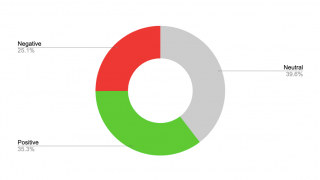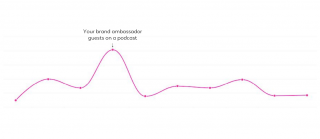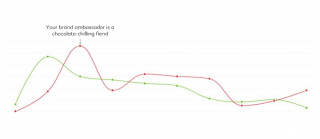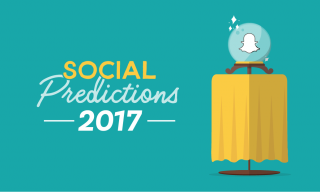Facebook stalking—we’ve all done it, particularly those of us who experienced the boom of social media in their formative years. Who’d have imagined that this past-time, the purpose of which was usually to find out a relationship status or two, would become a crucial tool in business strategy development for businesses across a tonne of sectors? Because, like it or not, consumers are bombarding social media with their views – and these insights are invaluable for those of us who love to know what makes them tick.
So, fellow brand enthusiasts, read on if you fancy finding out a little bit more about social listening and how it can make your life easier. You might even get carried away down the social listening rabbit hole, and find it pretty exciting!
What is social listening and why should you do it?
Social listening involves aggregating and analysing conversations happening on social media platforms, using specialist tools. Rather than looking at a brand’s full social media strategy and auditing their channels, it’s about understanding the conversations happening around your brand or industry. This uncovers not only what people say about your brand, but also how they feel about it.
You might be really proud of your social media strategy which covers a mix of content for your audience. Your results might be alright – but you realise that if you only look at performance internally, you could be missing a trick that could help you make them better.
So you dabble in a bit of social listening – and you find that although they like your content, people aren’t all that happy because you’re not replying to their messages. You change up your strategy a little – commit more time to community management – and boom! Your audiences are much happier now, so your social stats improve and you sell more of your products. Just like that. Welcome to being hooked on social listening.
How do we do it?
At MadeBrave, our clients come to us for social listening reports for a number of reasons. A lot of the time they want a quarterly report, which scrutinises the social conversations of the past three months (using the same methodology to allow for effective tracking, of course!). Sometimes a brand might have an issue that could cause major problems for the business, for example a product recall, and so a client will ask us for ad-hoc daily or weekly reports to track conversation in order to best respond to the reaction. And of course, there’s the COVID-19 pandemic, which is affecting every brand and industry on the planet.
Through social listening, brands can gain a deeper understanding of their customers’ concerns, how their competitors are dealing with the pandemic, and the impact on their overall industry. And the information is the up-to-date stuff – they don’t have to wait for a publication or industry report to come out, which means they can act quickly to reactively amend their strategy based on what the report tells them. What content can we put out that will alleviate customers’ worries? Could we partner with some competitors to tackle an issue? What can my brand do to help our industry as it copes with the effects of lockdown?
Essentially, social listening helps brands get immediate information that they can act upon to help them survive the effects of the pandemic. Wash your hands, by the way.
Social listening metrics
“So,” I hear you ask, “when conducting social listening, what exactly do we look at?” When we’re doing social listening reports, we analyse three key metrics:
1. Sentiment
This provides an indication of how people feel about your brand – positive, negative, and neutral. Sentiment analysis is great because it gives you a snapshot of your brand’s performance—although there’s sometimes a little bit of manual work involved. Social listening tools track sentiment based on the language used, so it might be necessary to do a quick review and tweak any pieces that have been labelled incorrectly.
For example, if your audience is from a culture that loves a bit of sarcasm (I’m looking at you, people of Scotland!), the social listening tool might think your sentiment is highly negative when in reality it’s not. It just doesn’t know that your product being ‘sick AF’ is a good thing. So it’s important to take some time to make sure the sentiment scores are accurate.

2. Conversation volume
We look at conversation volume tracked over time, which shows trends in the volume of social media mentions around your brand. This can be correlated with specific events or topics.
For example, if one of your brand ambassadors joins a podcast as a guest speaker, your brand might see a peak in conversation volume when it goes live. We can even take it one step further and track sentiment alongside conversation volume – after all, a peak in social mentions might not always be a good thing. For example, you might be pleased to see a peak in your social mentions after that podcast went live… but you might be less pleased when you find out the sentiment is mostly negative. You dig a little deeper and discover the audience is outraged, because your brand ambassador happened to mention that he stores chocolate in the fridge. (I mean, who does that?! Not my call but… fireable offence IMO)

Social conversation volume over time is useful to see peaks of mentions around an activity, but…

… pair it with sentiment and you learn LOADS more about the impact on your brand!

3. Topic themes
Looking at themes arising from your audiences’ social conversations is useful because it allows you to understand what people are saying in relation to your sector or brand. You can use this information to inform future content ideas or identify particular hashtags that will help you extend your brand reach.
So say you run a whisky brand. You might notice that mentions of ‘Lego’ appear regularly alongside mentions of your brand. That’s right, your customers love nothing more than pairing their Friday night dram with a good old fashioned utopia building sesh*. So now you’re considering a partnership with Lego (for the record, I’d be on board with a whisky-Lego brand partnership 110%).
You can even use social listening to track (cough spy) on your competitors, to help you stay one step ahead.
Social listening tools
So now you’ve got the low-down, what can you do to get an idea of how people feel about your brand? There are a bunch of great paid social listening tools – Meltwater, Brand24, and Sprout Social to name a few. But if you’re a small business or are on a tight budget, here are some easy free social listening ideas:
- Google Trends and Google Alerts: Google is your friend. In a similar way to conversation volume, Google Trends lets you see the peaks and dips for your brand searches. Take it one step further by setting up Google Alerts so you can get a short digest of highlights emailed to you every day. Nifty!
- TweetDeck: a lot of social conversations happen on Twitter – no surprises there! TweetDeck allows you to create a customised interface to monitor different users, hashtags, search terms and lists.
- Hootsuite: this works in a similar way to TweetDeck, but for all your social channels. There’s one catch though—it’s free for individuals, but business accounts have gotta spend some coin.
All that to say…
There’s no doubt about it, social listening is much more than just Facebook stalking—it’s actually hella useful. Whether it’s regular tracking or some ad-hoc investigation during a crisis—by looking at some simple metrics, you’re able to take steps to improve your brand strategy both at a business and marketing level.
And, you know the drill—keeping an eye on what makes your audience happy and tweaking your marketing accordingly is much more likely to love your brand. Most importantly, they’ll buy into your new whisky-Lego partnership. Cheers to that!
TL;DR: Social listening is awesome for brands and you should do it.
*= an insight that I made up. If you’re now thinking about starting a new whisky-Lego brand, do some research first.
Pssst… hey, down here! We recently did a webinar on how to safeguard your brand using social listening. You can watch it right here.
Also if you fancy a quick chat about how social listening can help you with your marketing or brand strategy, give us a call!


